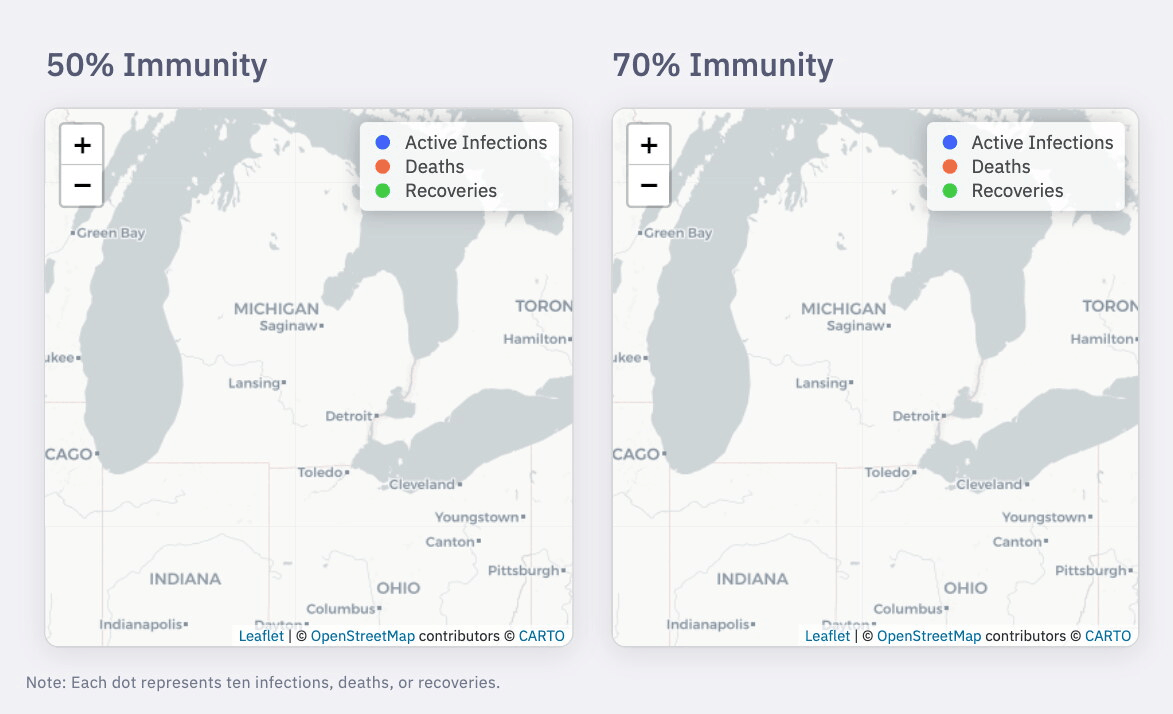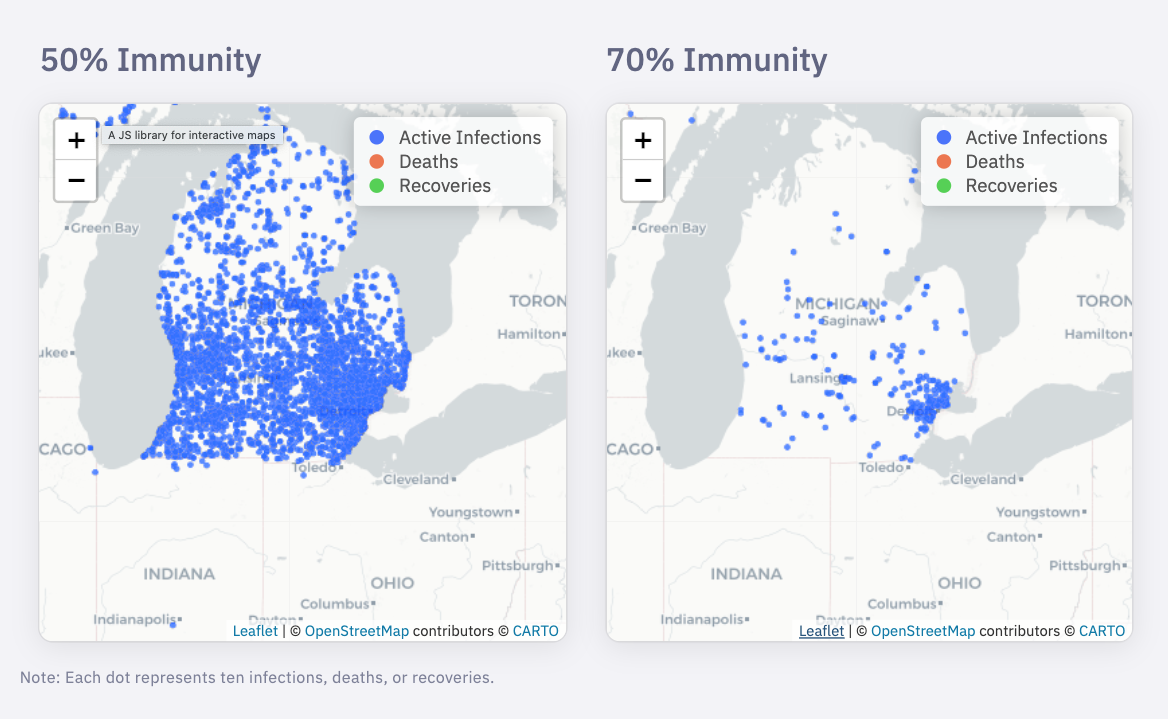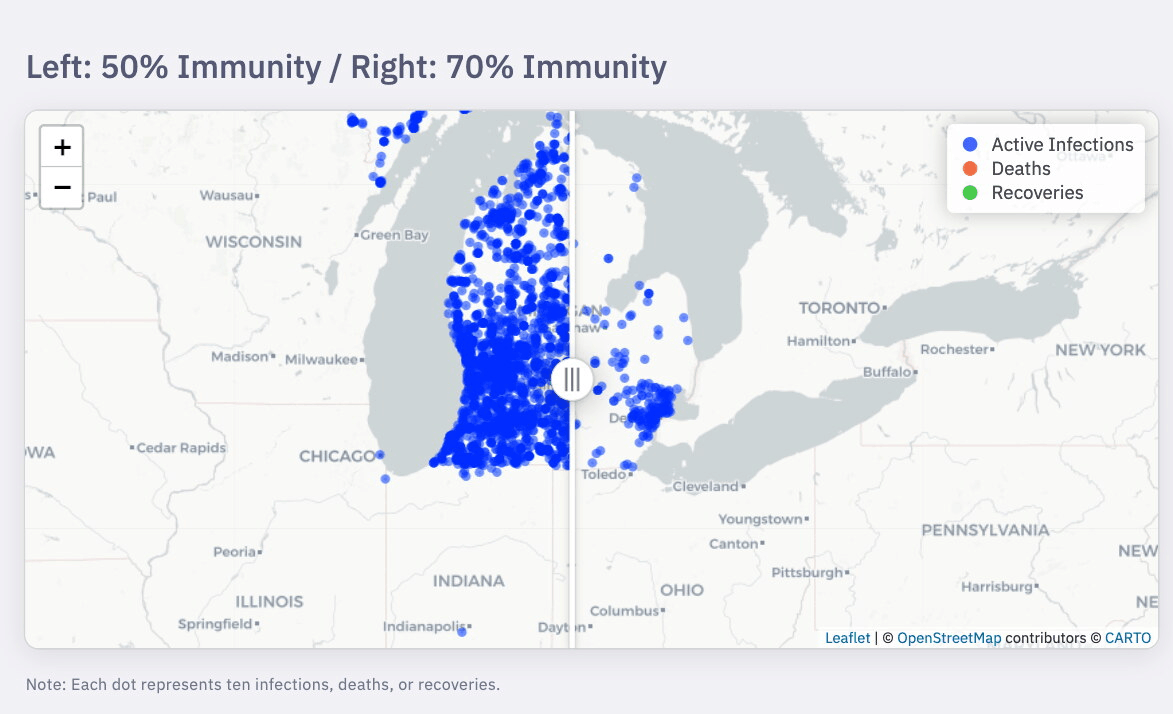Visualizing the Impact of COVID-19 Vaccinations in Michigan
March 10, 2020 marked the day of the first confirmed COVID-19 cases in Michigan. Since then, the New York Times reports there have been over 988,000 confirmed cases in the state. To understand how COVID-19 has affected so many people, we need to know why some viruses lead to epidemics and others don’t.
If a new virus is introduced into a population where few are immune, it will spread. But if that same virus encounters a population in which a sufficient number of people are immune, it cannot spread because there aren’t enough vulnerable people to infect—to see how immunity works, check out this simple simulation from NPR.
So, what constitutes “sufficient”?
This threshold varies depending on the infectious disease under consideration, but most researchers agree that at least 70% of people need to be immune from COVID-19 to prevent the virus from spreading. To establish the threshold, researchers determine the number of people who get infected from one person with the disease. This number is called the reproductive rate. When the reproductive rate of a virus is greater than 1.0, the virus will continue to spread.
People gain immunity to COVID-19 in two ways: by contracting and recovering from the virus, or by getting vaccinated. The latter is far less dangerous than the former, but both contribute to the overall immunity level of whatever community a person calls home.
Below, you can see how COVID-19 would spread across Michigan over an 18-week period after the state reached levels of 50% vs. 70% immunity. Note how active infections wax on the left, but wane on the right given a 20% bump in immunity.

The data behind these visualizations is generated by an Epistemix model that represents every person, workplace, school, and household in Michigan with statistical accuracy down to the census block level and uses realistic epidemiological and social dynamics to simulate the epidemic. The simulation starts with a fixed number of infections and tracks active cases, recoveries, and deaths while holding all other variables constant. Each blue dot represents 10 active infections and is located where one of the ten infections it represents occurred.
Here, you can compare the final state of infections at the end of the 18-week simulation.

And here, the slider reveals the same comparison on a single map.

With 50% immunity, COVID-19 will continue to spread because the reproductive rate is still above 1.0, but at 70% immunity, the reproductive rate is pushed to below 1.0 and cases decrease. The data from this simulation show that the 20% bump in immunity can decrease the total number of infections by 96% across Michigan.
Explore our interactive dashboard to see for yourself how these two immunity scenarios impact infection, death, and recovery rates in Michigan. You can also zoom in to explore the local implications for eight cities across the state, including Detroit, Lansing, and Ann Arbor.
With COVID-19 vaccines widely available, Americans are eager for life to return to normal. But as you can see from this simulation, until critical immunity thresholds are reached, communities risk deadly surges. Now is the time to double down on vaccination campaigns. The faster people get their shots, the sooner we can safely reopen.
Jeff Chrabaszcz, PhD is a senior scientist at Epistemix.

